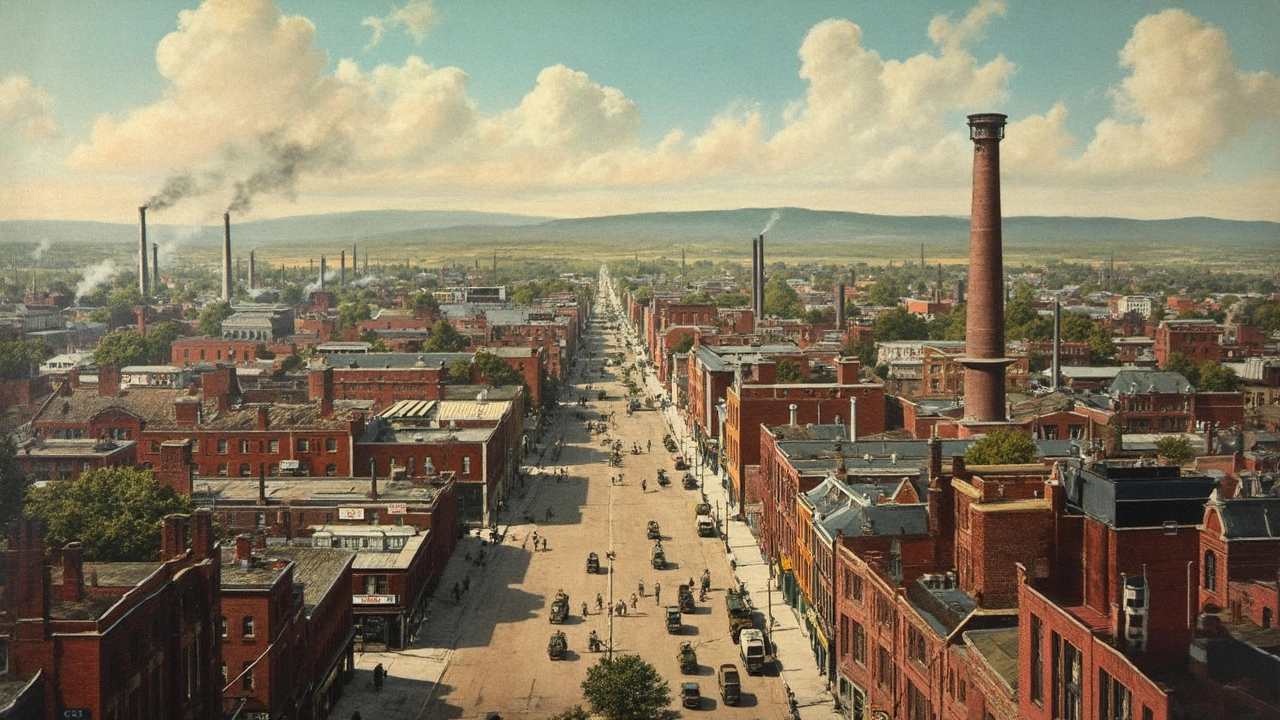Did you know that Greenville, South Carolina is often called the textile capital of the United States? It's not just some random nickname. This place has a storied past tied to the textile industry, which has shaped its identity over the years. If you're curious about how a city becomes the beating heart of textiles, hang tight.
Back when textiles were the big business in America, Greenville was at the center of it all. Its tale began in the late 1800s, which might feel like ancient history, but those foundations are what fueled its growth. Factories sprang up, and textile mills became the lifeblood of this community. This wasn't just about the economy; it was about culture, people, and innovation.
Greenville's Historic Rise
Greenville didn't just stumble upon its title as the textile capital of the U.S.; it earned it through decades of hard work and innovation. Back in the late 19th and early 20th centuries, Greenville was buzzing with activity. This was the golden age of the textile industry in America, and Greenville was right at the heart of it.
The rise began with the establishment of the first commercial textile mills in the area. These mills weren't just small operations; they were enormous buildings housing thousands of workers. In fact, by the early 1900s, Greenville County had more than 40 textile mills, making it one of the top producers in the nation. Family-run businesses quickly became major corporations, employing a significant portion of the local population. This economic boom turned Greenville into a vibrant community, attracting workers not just from nearby areas, but also from all over the country.
Several factors contributed to Greenville becoming the center of textiles. First off, the region's access to abundant water power from the Reedy River was a major boost. The local climate also worked in favor of textile production—cotton, the primary raw material, grew aplenty in South Carolina. Easy access to the railroads allowed for seamless shipping of both raw materials and finished goods, bolstering growth even further.
It's fascinating to see how a city transforms. By 1915, the southern states, with Greenville as a leader, had surpassed New England in textile production. This shift marked a massive change in the industry landscape. Greenville wasn't just about quantity; it was about setting trends and standards in production that would ripple through the decades.
Why Greenville?
So, what’s the big deal about Greenville? For starters, its location played a major role. Nestled in the foothills of the Blue Ridge Mountains, Greenville had access to waterways that were perfect for powering mills. Not just any mills—textile mills that churned out fabric that the world needed.
Greenville didn't just settle for geography, though. It made strategic moves, heavily investing in its infrastructure and recruiting skilled workers, giving them reasons to stay. The synergy of schools, like Clemson University, feeding educated talent into the market, made a huge difference.
Speaking of workforce, Greenville didn't just hire workers—it created communities. Families moved here because the mills provided stable jobs with living wages. Schools, parks, and health facilities popped up, creating a cohesive society around the textile economy.
The city’s commitment to keeping the industry thriving meant constant innovation. When the global markets threatened U.S. textiles, Greenville was already looking for ways to keep the American textile dream alive. Its local innovators pivoted, often collaborating with industries in places like India, known for its own textile manufacturers. This collaboration has helped maintain the city's status as a key player in the world of textiles.

Modern-Day Relevance
So, what's Greenville up to these days in the textile world? You'll be surprised by how much this city's history has paved the way for modern innovation. While the old textile mills may not be running at full tilt like in the past, Greenville has transformed into a hub of textile innovation and technology.
One of the key reasons Greenville remains relevant in the textile industry is its focus on advanced materials and fabrics. The city hosts cutting-edge research facilities and attracts top talent in the field of textile engineering. Companies here are often at the forefront of creating smart textiles, which are fabrics integrated with technology for various applications like healthcare, athletics, and fashion.
Moreover, Greenville's location still plays a vital role in its influence. It's strategically positioned within the Southeastern manufacturing belt, allowing it to quickly adapt and respond to market demands. The infrastructure supports a robust supply chain that's crucial for textile manufacturing, attracting businesses from all around the world.
- Greenville has capitalized on partnerships with local universities to foster research and innovation.
- The city hosts annual events, such as textile expos, which bring together industry leaders to share the latest trends and technologies.
- There's been a noticeable shift towards sustainability, with Greenville leading efforts in eco-friendly textiles and manufacturing processes.
A recent highlight is the partnership between Greenville firms and Indian textile manufacturers, aiming to combine American technology with Indian craftsmanship. This collaboration not only boosts economic ties but also enriches the product range available in both markets.
Global Connections
When we talk about Greenville, it's not just about what happens within U.S. borders. The city has some pretty interesting ties with global markets, particularly when it comes to textile manufacturers in India. This cross-ocean friendship is hugely significant in how textiles flow internationally today.
Picture a bustling factory floor in Greenville spinning yarns that end up woven into fine fabrics in India. This back-and-forth has led to some fantastic collaborations. Indian manufacturers provide high-quality raw materials and intricate designs, while Greenville offers advanced technologies and processes. Both sides bring something unique to the table, fostering a win-win partnership.
It's not just about products, though. Experts in textile technology frequently share knowledge and innovations, creating a vibrant learning environment. Many American textile firms have set up offices in Indian cities and vice versa. This connection has helped broaden not just business but cultural understanding too.
Imagine how much easier things have gotten with digital platforms for trade. Exporting and importing have become nearly seamless. Greenville’s business community frequently attends trade expos in India, scouting for cutting-edge trends and making deals that benefit both nations.
Some interesting numbers? Here's a small table for those of you who love data:
| Year | U.S. Textile Exports to India (in billion USD) | Indian Textile Imports to U.S. (in billion USD) |
|---|---|---|
| 2023 | 1.5 | 7.2 |
| 2024 | 1.8 | 7.5 |
So, next time you hear about a textile trade fair or conference, know that it’s not just about showing off products; it’s about strengthening these global ties. Greenville isn't just a textile capital in America—it's a crucial player on the world stage.
